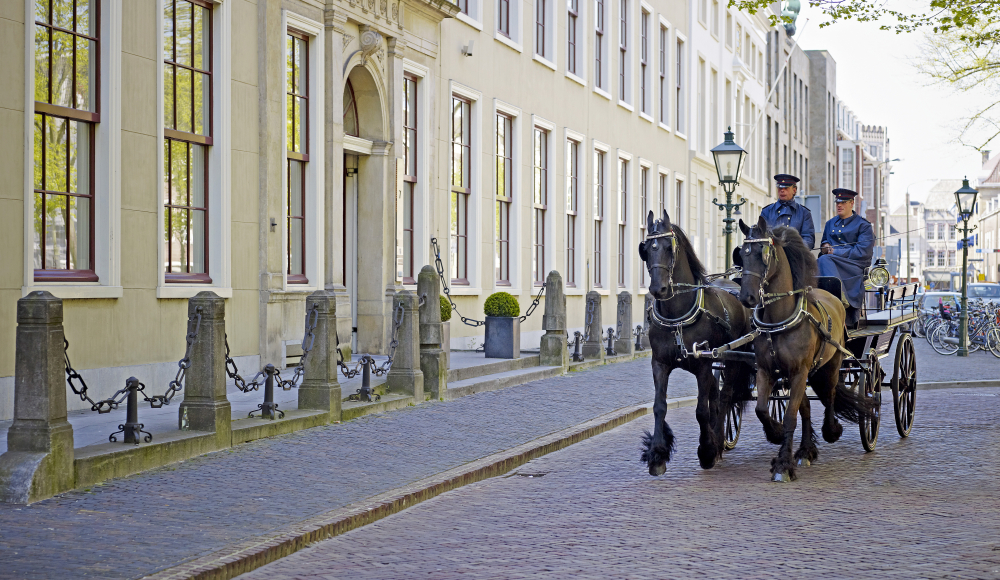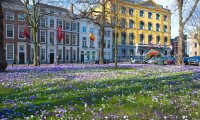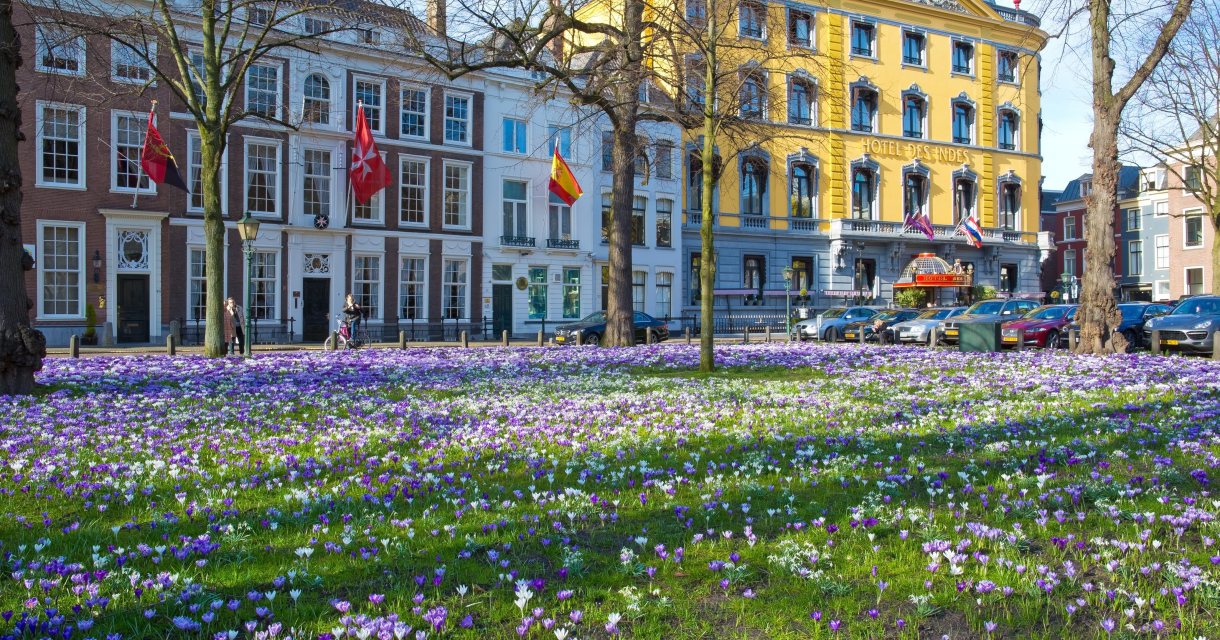
The Hague's Lange Voorhout is perhaps the most beautiful avenue in the Netherlands. Time sometimes seems to stand still on the beautiful Lange Voorhout, where you can stroll in peace. Both in spring when the Voorhout is enchanted by thousands of flowering crocuses and in autumn when the trees give the avenue a golden glow.

Festivals, events and exhibitions regularly take place on the centre aisle. The stately buildings house various cultural institutions, including Theatre Diligentia, Pulchri Studio and Escher in the Palace.
Origins of Lange Voorhout
Lange Voorhout (Voorhout with emphasis on the second syllable) is known as one of the most beautiful avenues in Europe. However, the avenue used to look completely different. Since the mid-14th century, the Voorhout was built up with houses that were crooked. Lange Voorhout, so called because it was an offshoot of the Haagse Bos (also called voor-bos or voor-hout), acquired its characteristic L-shape in the 15th century. This created a succession of gardens and narrow streets on the allee.
Lime trees
Emperor Charles V changed this. In 1536, he saw how 'the village of Die Haghe' was growing increasingly crowded and acquiring real city characteristics. He decided that all the front gardens of the properties should be merged into a wide avenue. Charles V ordered four rows of lime trees to be 'planted ende te setten in 't Voorhout van Den Haghe'. Since then, the avenue was popularly called Lindelaan or Lange Lindelaan. The poem "Liesje Liesje Leerd Lotje Lopen langs de Lange Lindelaan" is a reminder of this. Around 1540, Lange Voorhout as we still know it today came into being. In the 18th century, the remaining small houses along the lane were demolished and replaced by the stately buildings that still stand today.
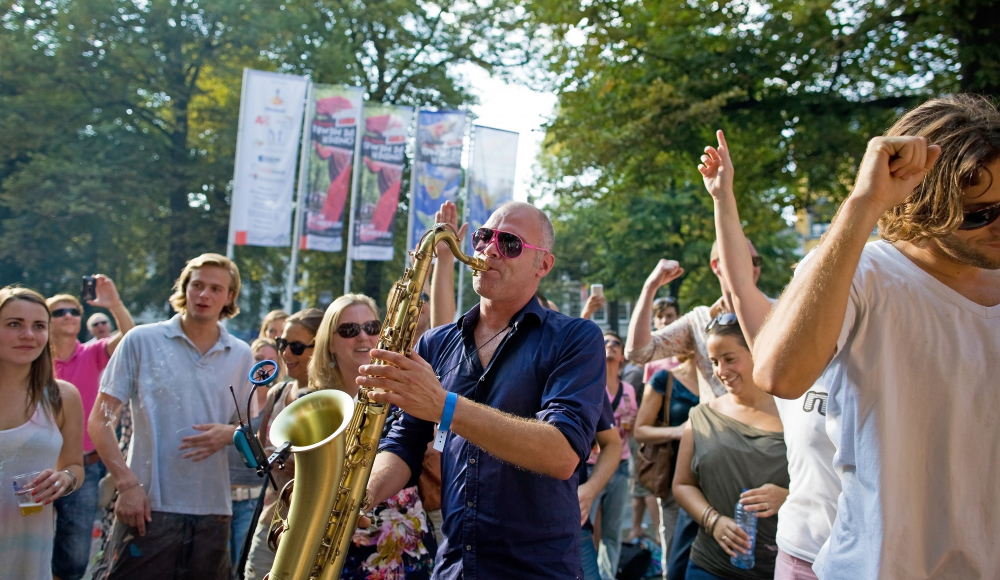
Shell sand
The characteristic shell sand was laid out centuries ago on Lange Voorhout. This was due to the fact that the avenue has a sandy surface. Centuries ago, it was common for horse-drawn carriages to get stuck in mud puddles created by rainstorms. To avoid such uncomfortable situations, the avenue was paved by laying shell sand. After World War II, carriages were hardly used anymore and the shell sand was replaced by cobblestones. In 1981, new heating pipes were laid and Lange Voorhout was restored to its former state, including shell sand. This was later removed again.
Redesign
In 2009, the Lange Voorhout was redesigned. The shell path returned and there is much less space for cars. The Voorhout has regained the appearance of a (spur of the) forest. As a result, Lange Lindelaan is back to what it was originally intended to be: a beautiful tree-lined avenue where one can stroll in peace and quiet.
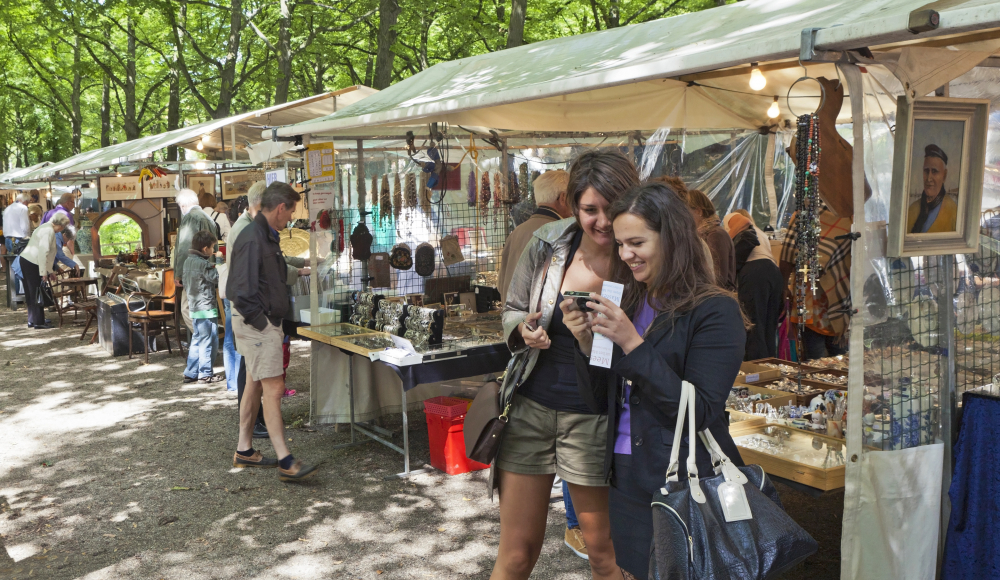
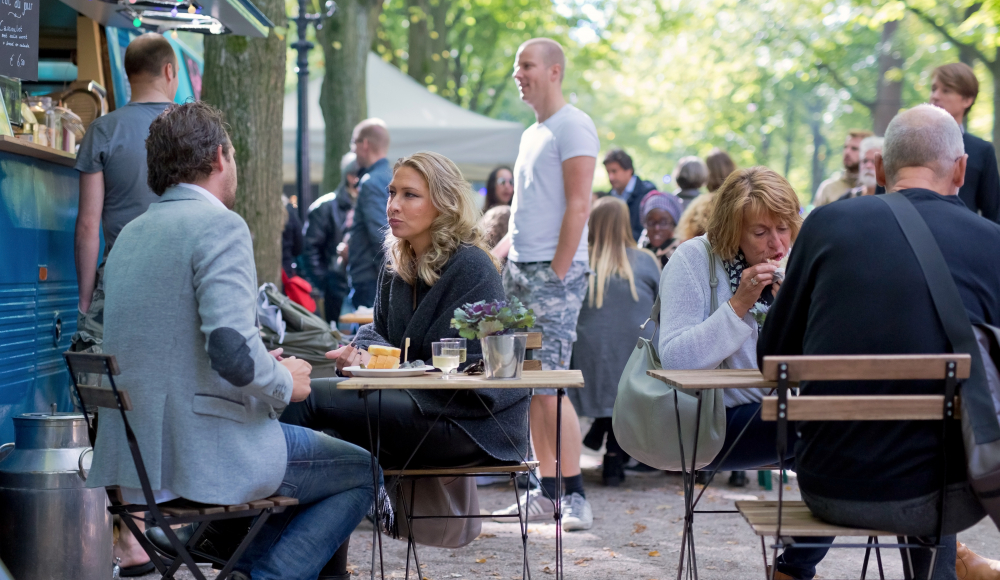
Accessibility Lange Voorhout
Lange Voorhout is located near the Binnenhof in the city centre of The Hague. If you enter by car via Utrechtsebaan, follow the signs for 'centrum'. The best place to park your car is in the Interparking Museumkwartier car park on the Korte Voorhout. You can also park under the Malieveld at Q-Park Malieveld, once you enter the city centre. From here, you can walk to the Lange Voorhout within five minutes.
If you travel to The Hague by public transport, you can walk from The Hague Central Station (10 minutes), or take tram 1 or 9. If you arrive at The Hague HS Station, also take tram 1 or 9 towards Scheveningen beach.
How to reach The Hague by car or public transport